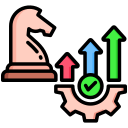Frameworks That Work: From SMART to WOOP and Beyond
Start SMART—specific, measurable, achievable, relevant, time-bound—then go SMARTER by adding evaluate and reward. For advancement, replace “get promoted” with “ship three portfolio projects by June, review monthly, celebrate milestones with a weekend hike.” This builds clarity and morale. Rewrite one goal using SMARTER and drop it in the comments; we’ll reply with suggestions.
Frameworks That Work: From SMART to WOOP and Beyond
Psychologist Peter Gollwitzer’s research shows If–Then plans dramatically increase follow-through. Example: “If it is 7:00 a.m. on weekdays, then I study Python for twenty-five minutes at the kitchen table.” These cues outsource discipline to context. Draft an If–Then plan for your top goal and post it; feedback fuels better triggers.







